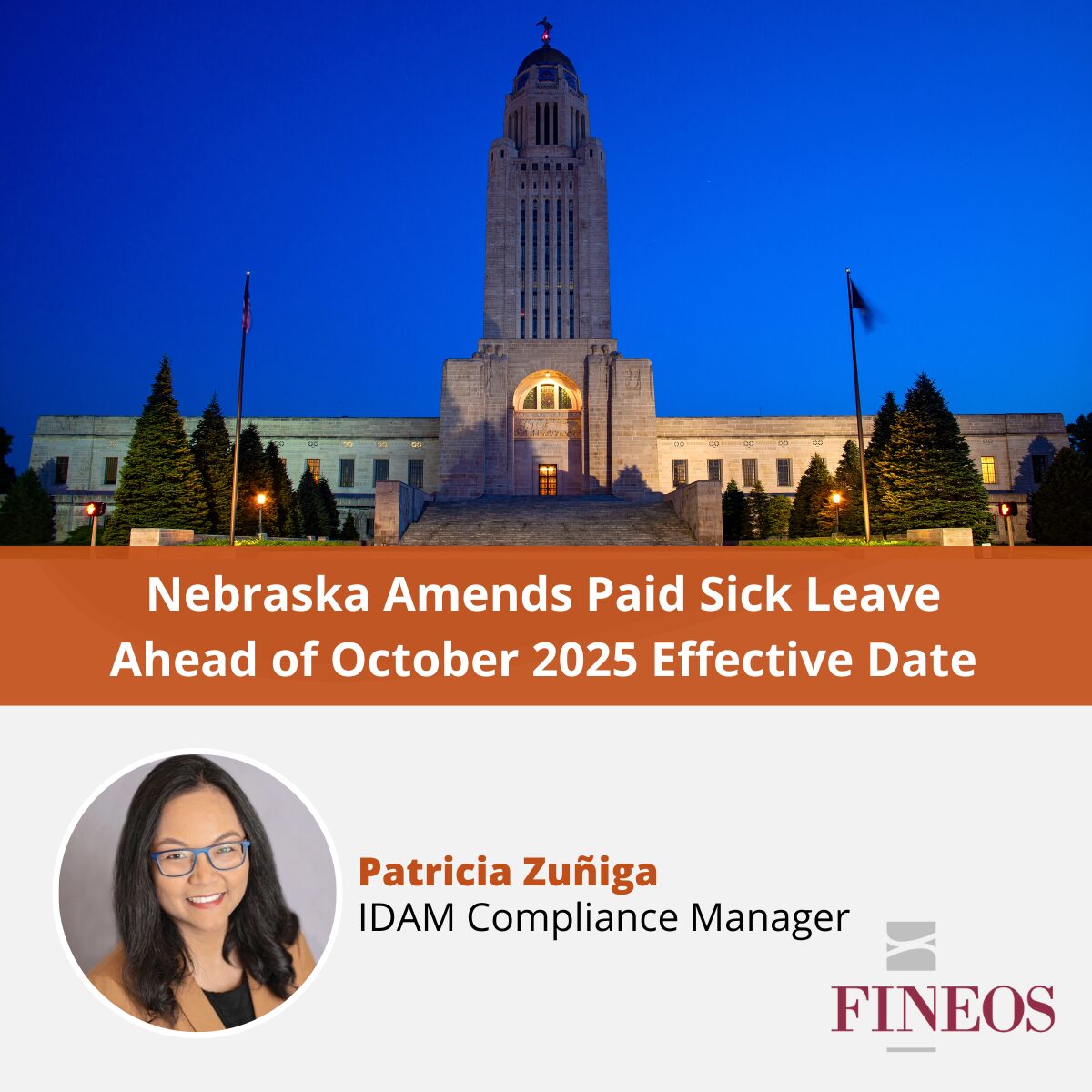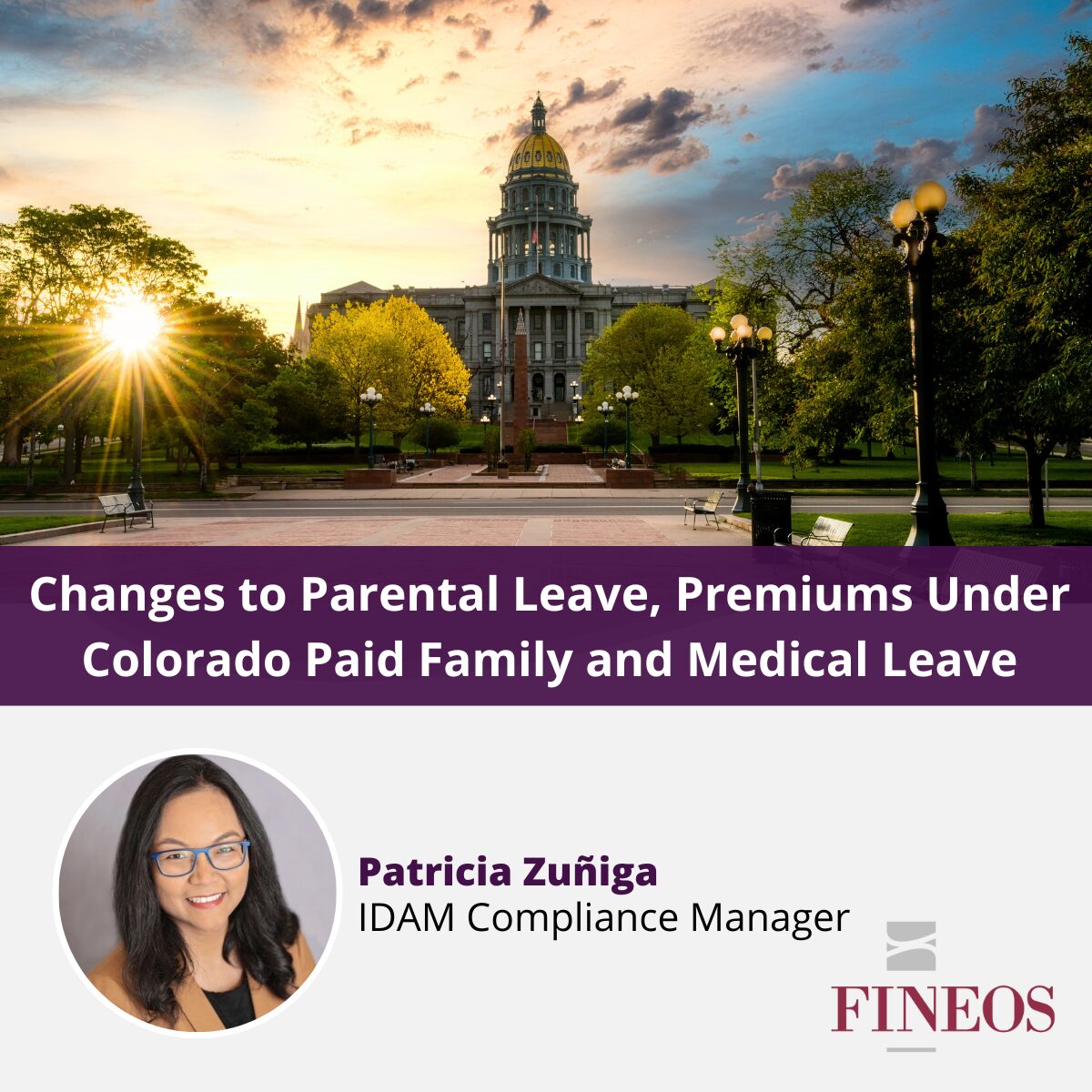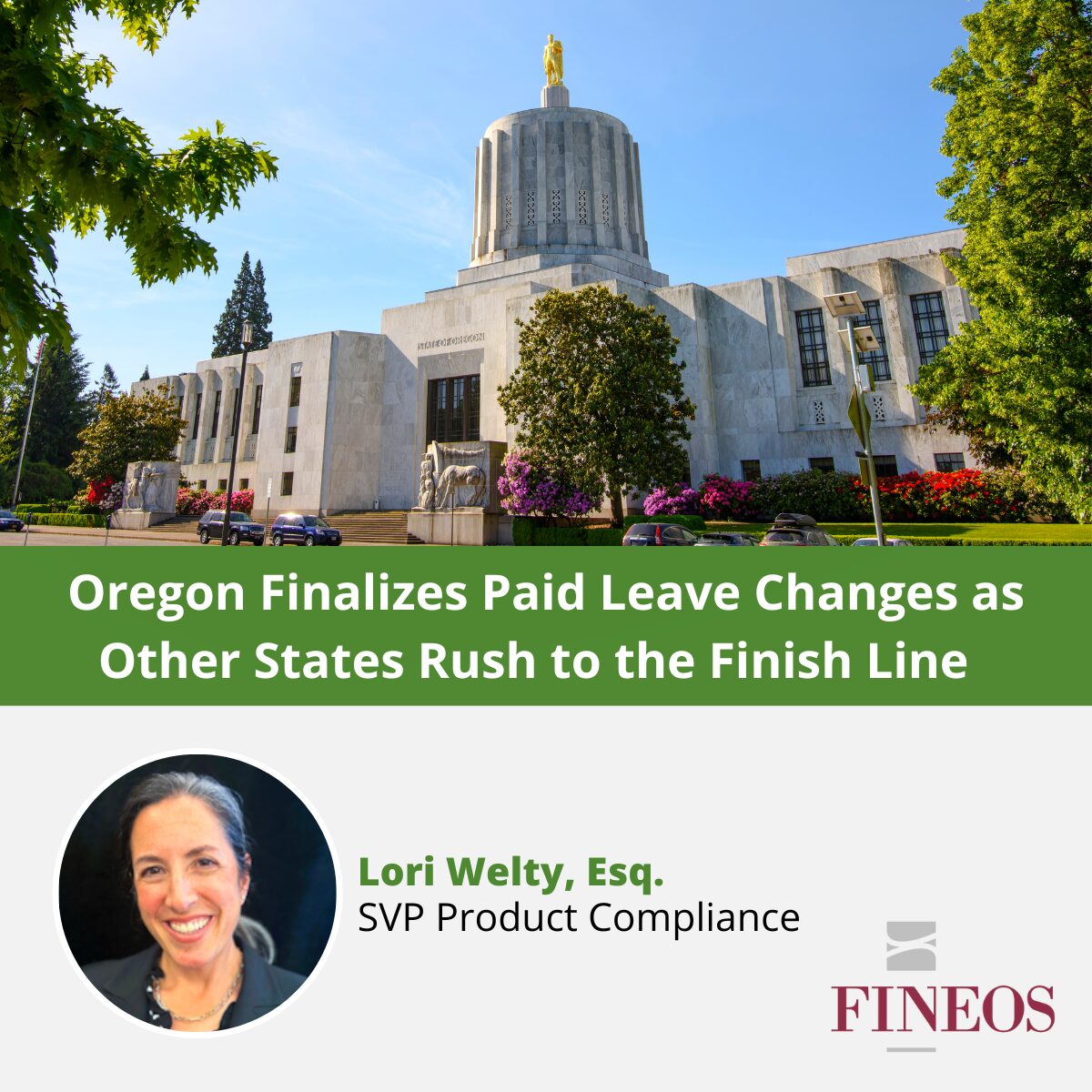On July 1, the Governor of Oregon signed Senate Bill 2005, establishing a paid family and medical leave (PFML) insurance program. This new law is in addition to the Oregon Family Leave Act (OFLA) which is an unpaid leave of absence law; the two laws run concurrently when applicable. Read on to learn more:
Key Points
| Leave Reasons | · Bonding
· Own or a family member’s serious health condition · Certain needs of the employee, employee’s child, or dependent related to domestic violence, harassment, sexual assault or stalking |
| Duration | · 12 weeks – family, medical, or safe leave, in any combination
· 16 weeks – any combination of the OR PFML (not to exceed 12 weeks) and unpaid leave under OFLA. · 2 additional weeks of benefits for limitations related to pregnancy, childbirth or a related medical condition for a total amount of leave not to exceed 18 weeks per year. |
| Benefits | · If the employee’s average weekly wage (AWW) is equal to or less than 65% of the state’s AWW – 100% of employee’s AWW.
· If the employee’s AWW is more than 65% of the state AWW, 65% of the state AWW + 50% of the employee’s AWW that exceeds 65% of the state AWW. |
| Contributions | 1% percent of employee wages, up to a maximum of $132,900 in wages. Employer contributions – 40%, employee contributions – 60%. |
| Important Dates | Rules adopted – September 1, 2021. Contributions – January 1, 2022. Benefits begin on January 1, 2023. |
Detailed Analysis
Eligible employee. An eligible employee is:
- an employee who has earned at least $1,000 in wages during the base year (first four of the last five completed calendar quarters preceding the benefit year); or
- if an employee has not earned at least $1,000 in wages during the base year, an employee who has earned at least $1,000 in wages during the alternate base year (the last four completed calendar quarters preceding the benefit year; a
Covered Employer. All employers with at least one employee or Oregon are covered by the PFML law.
Benefit eligibility. PFML benefits are for family leave, medical leave or safe leave, as defined below:
- Family leave means leave from work:
- To care for and bond with a child during the first year after the child’s birth or during the first year after the placement of the child through foster care or adoption; or
- To care for a family member with a serious health condition.
- Family leave does not include caring for a child with a non-serious health condition, bereavement, or military leave.
- Medical leave means leave from work taken by a covered individual that is made necessary by the individual’s own serious health condition.
- Safe leave means leave taken for certain needs of the employee, employee’s child, or dependent related to domestic violence, harassment, sexual assault or stalking, including seeking legal remedies, medical treatment, counseling, victim services, or to relocate or to take other steps to secure safety.
Covered Family Members. Family members include:
- A spouse;
- A child or a child’s spouse or domestic partner;
- A parent or the parent’s spouse or domestic partner;
- A sibling or stepsibling of a covered individual or the sibling’s or stepsibling’s spouse or domestic partner;
- A grandparent or the grandparent’s spouse or domestic partner;
- A grandchild or the grandchild’s spouse or domestic partner;
- A domestic partner; or
- Any individual related by blood or affinity whose close association with a covered individual is the equivalent of a family relationship.
Duration of benefits. An employee can qualify for up to 12 weeks of family and medical leave insurance benefits per year for leave taken for family, medical, or safe leave, in any combination. An employee who has taken any amount of paid leave under the Oregon PFML program can take a total of 16 weeks of leave in the year in any combination of OR PFML (not to exceed 12 weeks) and unpaid leave under OFLA. An employee can qualify for up to two additional weeks of benefits for limitations related to pregnancy, childbirth or a related medical condition, including but not limited to lactation, for a total amount of leave, not to exceed 18 weeks per year.
Benefits can be claimed for leave in increments that are equivalent to one work day or one work week (to be further defined in regulations). If a covered individual takes leave in increments that are equivalent to one work day, benefits may be claimed for leave that occurs in nonconsecutive periods of leave that, when combined, provide the minimum benefit amount. Benefit amounts:
- Must be prorated to increments that are equivalent to one work day; and
- Must be paid in increments that are equivalent to one work week.
Coordination of leave with OFLA and PSSL. Any leave taken pursuant to OR PFML must be taken concurrently with leave under the Oregon Family Leave Act (OFLA) or the federal FMLA. However, leave and benefits under OR PFML are in addition to any paid sick time under Oregon’s Paid Sick and Safe leave law, vacation leave, or other paid leave earned by an employee. An employer can permit an employee to use paid sick time, vacation leave, or any other paid leave earned by the employee in addition to receiving PFML benefits to replace an employee’s wages up to 100% of the employee’s AWW during a period of leave taken for family leave, medical leave or safe leave.
Amount of benefits.
- If the employee’s AWW is equal to or less than 65% of the state AWW, the employee’s weekly benefit amount shall be 100 percent of the employee’s AWW.
- If the employee’s AWW is greater than 65% of the state AWW, the employee’s weekly benefit amount is the sum of:
- 65% of the state AWW; and
- 50% of the employee’s AWW that is greater than 65 percent of the state AWW.
The maximum weekly benefit amount is 120% of the state AWW and the minimum weekly benefit amount is 5% percent of the state AWW.
Employer Notice. An employer must provide written notice to each employee of the employee’s duties and rights. Notices must be in the language the employer typically uses to communicate with the employee.
Contributions. Contributions must be paid by employers and employees as a percentage of a total rate determined by the Director of the Employment Department. The total rate may not exceed 1% of employee wages, up to a maximum of $132,900 in wages. Employer contributions make up 40% of the total rate, while employee contributions make up the remaining 60%. An employer may elect to pay the required employee contributions, in whole or in part, as an employer-offered benefit. Employers that employ fewer than 25 employees are not required to pay the employer contributions.
Employee Notice. An employer may require employees to give the employer written notice at least 30 days before the start of a period of PFML. The employer may require the employee to include in the notice an explanation of the need for the leave. An employee may begin leave without 30 days’ notice if the leave is not foreseeable, in certain circumstances.
If an employee begins leave without prior notice, the employee must give oral notice to the employer within 24 hours of the start of the leave and must provide the written notice within three days after the start of leave. If an employee fails to give notice as required, benefits may be reduced.
Job and Benefit Protection. Job restoration, as described below, applies only to an employee who was employed by the employer for at least 90 days before taking leave under OR PFML. After returning to work after a period of PFML leave, an employee is entitled to be restored to the position of employment held by the employee when the leave began, if that position still exists. If the position held by the employee at the time leave began no longer exists, the employee is entitled to be restored to any available equivalent position with equivalent employment benefits, pay and other terms and conditions of employment.
For employers with less than 25 employees, if the position held by an employee when the employee’s leave began no longer exists, an employer may, at the employer’s discretion based on business necessity, restore the employee to a different position with similar job duties and with the same employment benefits and pay.
An employer must maintain health care benefits while an employee receives OR PFML benefits.
Private Plans. An employer can apply to the Director of the Employment Department for approval of an employer-offered benefit plan that provides family and medical leave insurance benefits if the plan:
- is made available to all employees who have been continuously employed with an employer for 30 days; and
- provides benefits that are equal to or greater than the weekly benefits and the duration of leave that an employee would qualify for under the state plan.
Regulations. Regulations must be finalized and adopted by the Oregon Director of the Employment Department no later than September 1, 2021
What is FINEOS doing to prepare for the new law? The new law requires the Oregon Director of the Employment Department to adopt rules for the administration of the program no later than September 1, 2021. As FINEOS does with the other Paid Family and Medical programs in the process of implementation, we will stay engaged in the regulatory process. FINEOS Absence will be able to support the Oregon Paid Family and Medical program by the January 2023 program start date.


